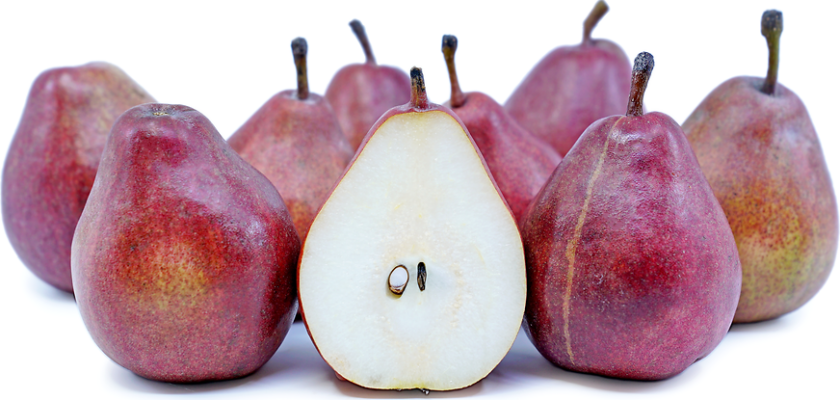Red Anjou pears are a distinctive and flavorful variety of pear known for their vibrant red skin and sweet, juicy flesh. Whether enjoyed fresh, sliced in salads, or used in cooking and baking, selecting the right Red Anjou pears is essential for a delightful culinary experience. Here’s a comprehensive buyer’s guide to help you make informed choices:
- Color and Appearance: Look for Red Anjou pears with deep, rich red skin that is free from blemishes, cuts, or bruises. While the skin is mostly red, some areas might have a slight green undertone. Avoid pears with wrinkled or dull skin, as this can indicate poor quality.
- Texture: Gently press the pears near the stem end to assess their ripeness. A ripe Red Anjou pear should yield slightly to gentle pressure but remain mostly firm. Avoid pears that are too soft, as they might be overripe.
- Stem: Check the stem of the pear. It should be intact and firmly attached to the fruit. A fresh-looking stem indicates a recently harvested pear.
- Size: Red Anjou pears come in various sizes, so choose pears that suit your preferences and intended use. Larger pears can be great for sharing or slicing, while smaller ones are convenient for snacking.
- Ripeness: Decide whether you want to eat the pears immediately or let them ripen at home. Select fully ripe pears with a slightly yielding texture and a sweet fragrance if you plan to consume them right away. For later consumption, choose pears that are slightly underripe with a firmer texture.
- Seasonality: Red Anjou pears are typically in season during the fall and winter months. Purchasing them during their peak season ensures better flavor and quality.
- Source: Whenever possible, opt for locally grown Red Anjou pears. Local options are likely to be fresher and have a reduced carbon footprint due to shorter transportation distances.
- Packaging: Examine the packaging for any signs of damage or bruising. If buying loose pears, handle them gently to prevent unnecessary bruising.
- Organic Options: For those who prefer organic produce, seek out certified organic Red Anjou pears. Organic pears are cultivated without synthetic pesticides or fertilizers, addressing concerns about chemical residues.
- Storage: If you’re planning to consume ripe pears soon, store them in the refrigerator. If you’ve purchased slightly underripe pears, leave them at room temperature to ripen, and then move them to the refrigerator once they’re fully ripe.
- Intended Use: Consider how you intend to use the pears. If you want to enjoy them fresh, choose ripe pears with a sweet aroma. For cooking or baking, slightly firmer pears that hold their shape when cooked might be preferable.
In conclusion, Red Anjou pears offer a delightful flavor and versatility for various culinary applications. By taking into account factors such as color, texture, ripeness, and intended use, you can make an informed purchase that ensures you select the best quality Red Anjou pears for your preferences and needs.
